Node.js is really getting popular + being used more and more each day and it deserves this attention with the flexibility and performance if offers. In a single definition: Node.js is a server-side JavaScript environment that uses an asynchronous event-driven model. There are myriad of IDEs available online which you can use for building Node.js applications. An IDE or integrated development environment is a collection of tools roughly focused on a common task, such as Ruby development, and all include some form of an editor. Some IDEs are dedicated to a specific, single programming language while there are a few more that support multiple languages. Eclipse, NetBeans, CodeEnvy, Xojo and Xcode are some examples of modern IDEs.
In this article we have chosen some of the Best IDEs for Node.js Development, which would help you to accomplish your development tasks. If you are aware of some other IDEs for Node.js applications, please let us know by posting comment in comment section. Enjoy!!
1. Intellij IDEA
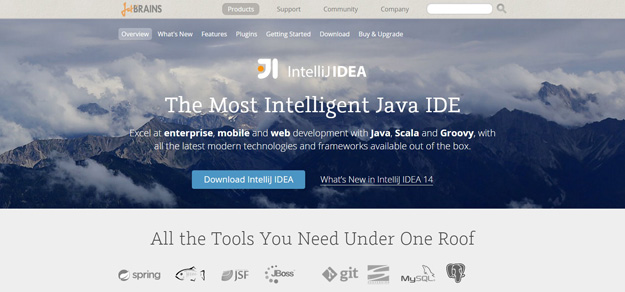
Intellij IDEA is a robust IDE for web application development using popular technologies, such as Node.js, Angular.js, JavaScript, HTML5 and more. IntelliJ IDEA offers outstanding framework-specific coding assistance and productivity-boosting features for Java EE, Spring, GWT, Grails, Play and other frameworks, along with deployment tools for most application servers. IntelliJ IDEA includes an amazing set of tools which work out-of-the-box: support for Maven, Gradle and STS; integration with Git, SVN, Mercurial; built-in Database Tools; and many more.
2. Cloud 9
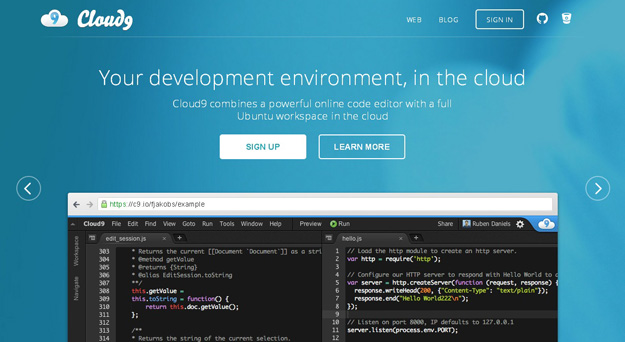
Cloud 9 is a free, cloud-based IDE supporting application development with popular technologies, including Node.js, PHP, C++, Meteor and more. Cloud9 is a cloud-based code editor. It requires you to register for an account in order to use it, a prerequisite that isn’t everyone’s cup of tea. You’ll also have to pay in order to unlock its premium features.
3. Komodo
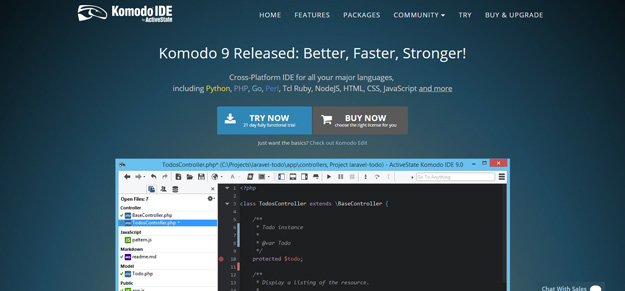
Komodo is the professional IDE for major web languages, including Node.js, Python, PHP, Ruby, Perl, HTML, CSS and JavaScript. Komodo IDE’s complete set of tools provide hassle free development environment for developers. The IDE offers a variety of features, including syntax highlighting, keyboard shortcuts, collapsible panes, workspace, auto indenting, code folding and code preview using built-in browser. Koding offers multi-cursor support to allow making similar edits at once.
4. WebStorm

WebStorm is a popular JavaScript IDE, which is ideal for server-side development with Node.js. WebStorm 7 provides new tools to keep up with the latest and greatest web development innovations, helping you get more out of new technologies every day. For a more complete experience with Sass, there is now support for Compass. It includes completion, resolving and finding usages for functions, mixins and variables from imported Compass files.
5. Sublime Text

This is a well-loved code editor and IDE for Node.js. But it’s not entirely free: You can jump to symbols, lines or words using shortcuts and use multiple selection option to rename variables and manipulate files faster. Sublime Text also offers options for split editing, customizing, project switching and more.
6. Atom
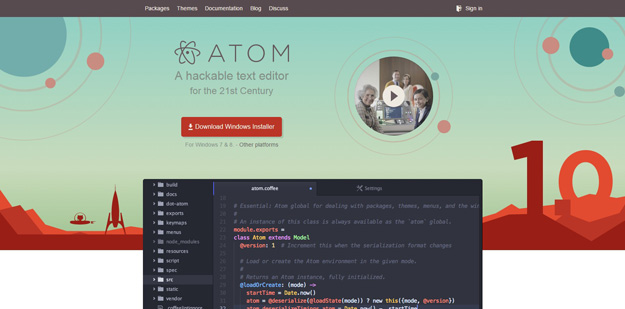
Atom is a desktop application built with HTML, JavaScript, CSS, and Node.js integration. It runs on Electron, a framework for building cross platform apps using web technologies. Node.js support makes it trivial to access the file system, spawn subprocesses, and even start servers directly from within your editor. Atom comes pre-installed with four UI and eight syntax themes in both dark and light colors. If you can’t find what you’re looking for, you can also install themes created by the Atom community or create your own.
7. Brackets

Brackets is an open source code editor (IDE), built by Adobe, which iscreated with only client-side web technologies like HTML-CSS and JavaScript. The editor focuses on simplicity and, rather than too many panels, the quick-edit UI is the main thing. A “live development” feature syncs a browser with the editor and displays any changes instantly. It is integrated with the Chrome’s Developer Tools and JSLint for debugging. Brackets, although being web-based, works in a native shell (Win & Mac versions available) to reach the filesystem.
8. Eclipse

Eclipse is one of the most popular IDE amongst java developers, It has a very active community and many open source plugins + developer tools built around the ecosystem. the coolest features of Eclipse is its code Automatic build that retains time as the developers never have to see in the API documents. Other features include Built-in debugger, Error checking, Source code generation, Code refactoring, Help window as toy type. Eclipse is an open source, free IDE like NetBeans, so the users can work on both the web and the desktop IDEs by building their own plug-ins to modify Eclipse to meet their particular needs.
9. Nide

Nide is a web-based IDE for Node.JS, designed with simplicity and ease-of-use in mind.
You can run Nide locally or install it on your remote server, and access it through your Web browser. The Nide IDE is available both as a command-line tool and as a standalone Mac app.
10. Koding

Koding is an open-source, cloud-based IDE for developing applications using Node.js, PHP, Ruby and more. The IDE offers a variety of features, including syntax highlighting, keyboard shortcuts, collapsible panes, workspace, auto indenting, code folding and code preview using built-in browser. Koding offers multi-cursor support to allow making similar edits at once.
11. WebMatrix
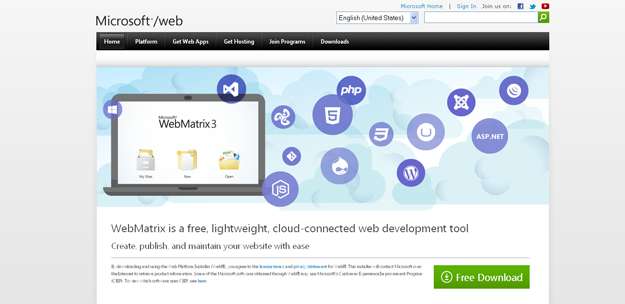
WebMatrix is a free and cloud-based IDE for Windows platform. It supports web development using Node.js with features, such as code completion, built-in templates and publishing to the cloud. WebMatrix has built-in Node.js templates for website and web application development that use Express, routing, OAuth, and more.



